What I Learned From Drag Racing the 797-Horsepower Hellcat Redeye
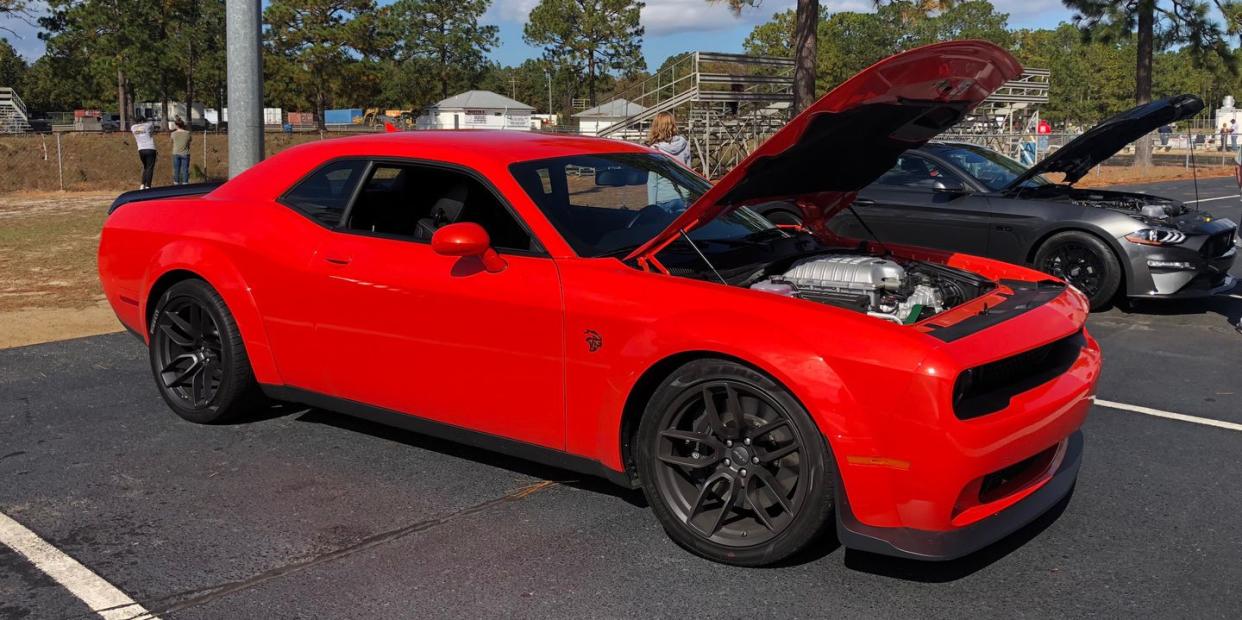
Most cars are easy to run at the drag strip. Line up, wait for the green light, and go. In today's fancier cars, the machine can do it for you: All-wheel-drive monsters like the Porsche 911 Turbo and Nissan GT-R can dial up launch control and let a computer-orchestrated clutch drop send you on your way.
Once you’ve got more power than the tires can handle, though, that's when the tricks and artistry come into play. And the 2019 Dodge Challenger SRT Hellcat Redeye Widebody has a lot more power than the tires can handle. Let's put it this way: when your car’s low-power valet mode dials it back to only 500 horsepower, you’ve got a whole lotta motor.
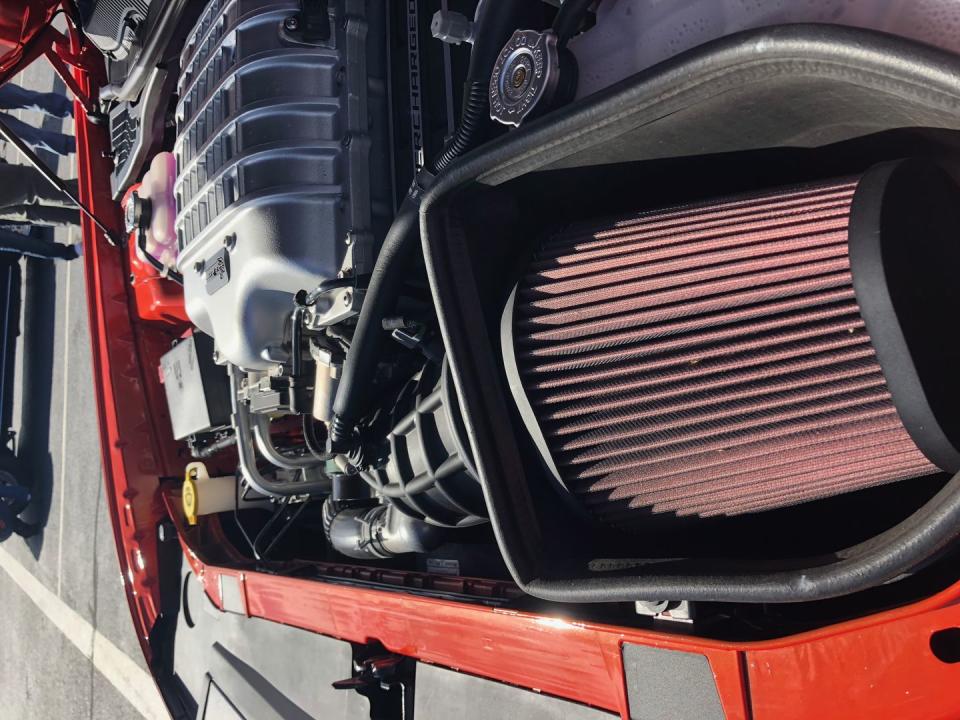
The Redeye’s numbers (797 horsepower and 707 lb-ft of torque) come within a rounding error of the ultimate Challenger: the Demon. Dodge quotes a quarter-mile time of 10.8 seconds at 131 mph, so I headed to the strip to see if I could replicate that in a shiny new Go Mango Redeye.
Even with nearly 800 horsepower, breaking into the 10s isn’t easy. You need a perfect launch and perfect weather in terms of temperature and humidity. A friend of mine at the strip points to his drag-racing weather app on his phone and opines that things are a little swampy for ideal times. “Everything’s going to be a few tenths off today,” he says.
We’ll see about that.
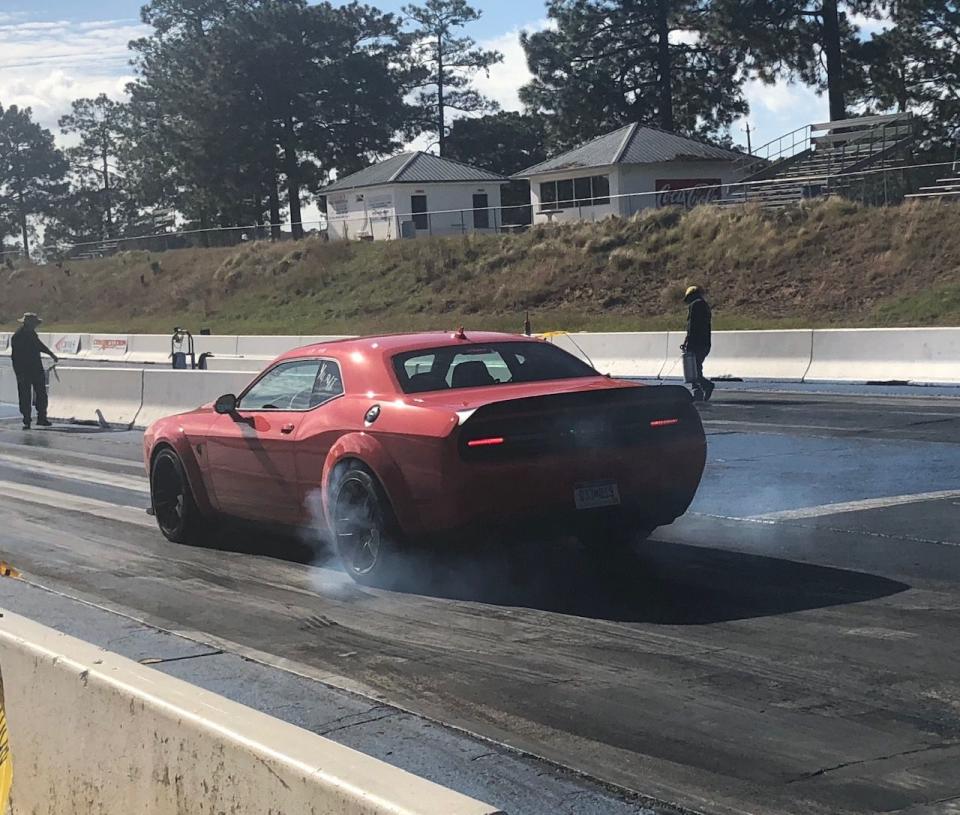
First, I air down the rear tires to 26 psi warm, setting off the tire-pressure warning system but giving the Redeye a bigger footprint. As I idle to the staging area, I leave the car in Track mode, which diverts the air conditioning system to the Power Chiller, a device that lowers the temp of the supercharger’s intercooler. I also deactivate stability control. Then, at the burnout box, I drive around the water as best I can and back into it, to avoid dragging water out ahead with the front tires.
Now comes the easy part. It’s hard not to do a burnout in a Redeye, but nonetheless the SRT engineers gave the Challenger a line lock feature that clamps the front brakes but leaves the rear ones open to enable perfect burnouts. I never really get line lock in a groove-it would work, but the car seemed to hate it and at one point actually stalled-so I revert to doing things the old-fashioned way, with my left foot lightly on the brake and my right not-so-lightly on the throttle. That’s enough to warm up the tires.
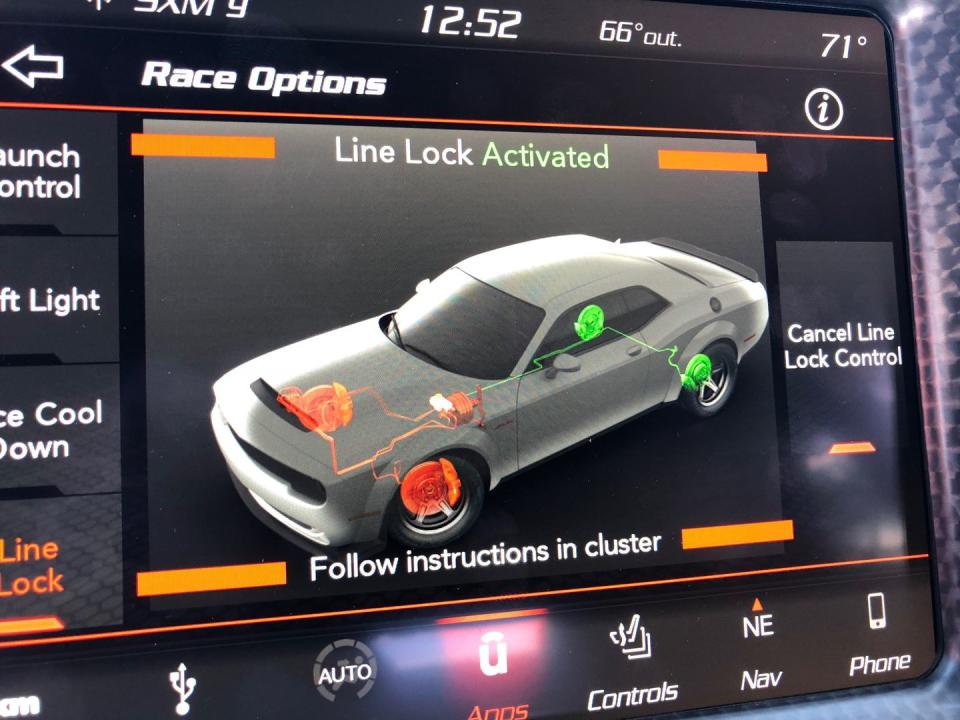
As I approach the line, I switch the car from Track mode to a custom setup I’ve optimized for the strip. Basically, you want everything in Track, hopped-up to the max, except for the adjustable suspension. That you leave in the Street, the softest setting, to facilitate maximum weight transfer onto the rear end. I also leave the paddle shifters off, since the ZF8 transmission can snap off perfect upshifts quicker than I can.
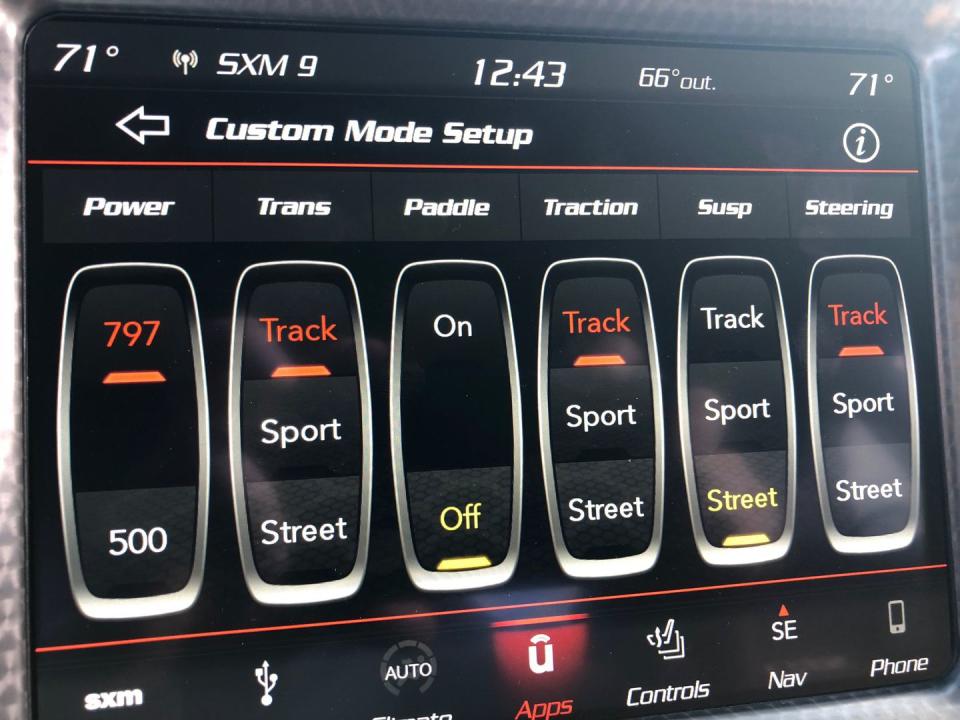
When the Christmas tree counts down to green, the make-or-break on every run comes in the first 60 feet. If you’re too gentle, you sacrifice time. But even slightly too much gas will break loose the rear end and kill your run with wheelspin.
There’s a fine line when the car will hook up, just on the edge of wheelspin, and huck itself out of the gate with maximum ferocity. I recite a mantra: no wide-open-throttle till second gear. Otherwise the 1-2 shift will spin the tires and blow up your run-assuming you aren’t spinning them already.
In second gear and beyond, a Redeye on the strip is a rush unlike anything else I’ve driven. You hold the throttle down, the huge 2.7-liter supercharger screams through its hollow-headlight air intake (one of three air sources). You just enjoy the preposterous acceleration until you pass the timing lights. The Challenger’s in-car G-force recorder records a maximum of 1.26 G under acceleration. That’s digging.
On the return road, you put the car back into Track mode to activate the Power Chiller. If you’ve got a few minutes to wait, you park the car and activate the After-Run Chiller, which runs the fans and circulates coolant with the engine off. Cooler engine, denser air, more horsepower, quicker times.
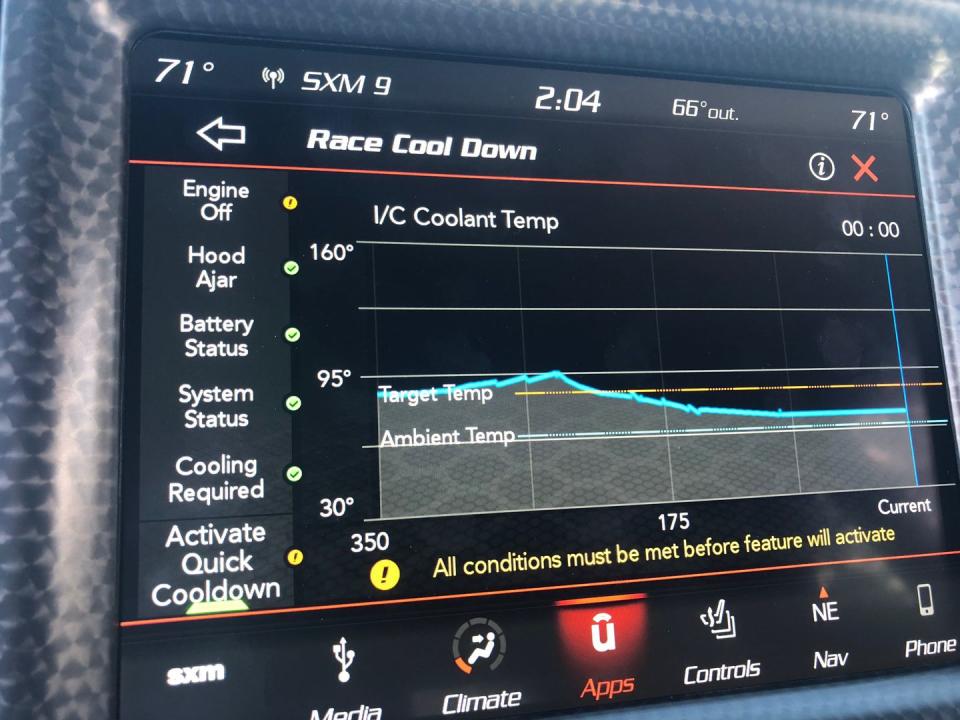
But not the quickest times. As my friend predicted, the Redeye was a few 10ths off its theoretical best, running 11.1 at 127 mph. That latter number points to the horsepower deficit imposed by warm, humid air. If the trap speed had been in line with Dodge’s claimed 131 mph, then the elapsed time would’ve been, too. But with a sub 1.8-second 60-foot time, I don’t think the launch could’ve been too much better on street tires. The car next to me on my time slip was a modified Charger Hellcat on drag tires, and his 60-foot was about 1/10 of a second quicker-an advantage that carried through till the end.
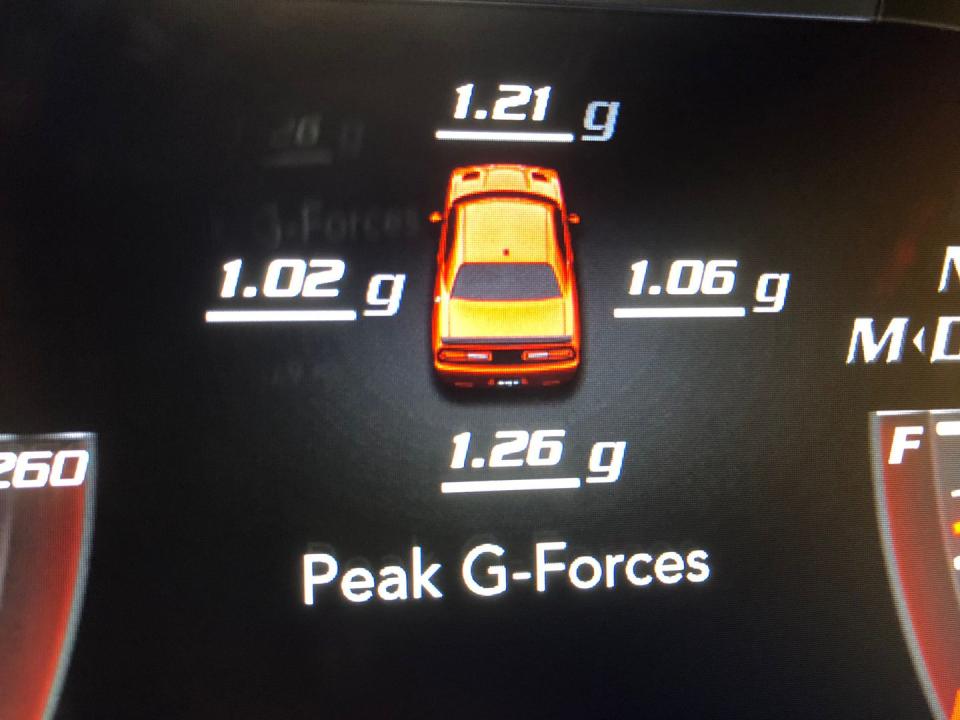
So I didn’t break into the 10s this time. But I have no doubt this is a 10-second car.
('You Might Also Like',)

